Transcription of Interpretation and Use of Penetrometer Data to …
1 Interpretation and Use of Penetrometer Data to describe soil compaction in vineyards . L. VAN HUYSSTEEN Viticultural and OenLllogical Research Institute, Private Bag X5026, 7600 Stellenbosch, Republic of South Africa. The author wishes to express his thanks and appreciation to Miss A. E. Theron for her technical assistance. Submitted for publication: May 1983 Accepted for pUblication: September 1983 A portable recording Penetrometer was used for in situ field measurements of soil strengths in existing experiments with known profile characteristics. The data reported include effects of soil preparation methods, tractor wheel compaction and soil moisture on soil strength, as well as a case study in a production'vineyard.
2 The Penetrometer proved to be a useful instrument in identifying and quantifying soil compaction problems and the effects of soil management systems in vineyards . The data revealed that serious subsoil compaction can exist which may result in very poor vine perfor-mance and even death of the vines. It is well-known that the soil physical environment is of great importance for optimum plant growth. There-fore, there is a need to describe or to quantify optimum soil physical conditions or the effects of different management practices. According to Cassel, Bowen & Nelson (1978), a systematic measurement of soil physical properties, unlike chemical properties, and subsequent recommendations fof modification has not been achieved on a routine basis.
3 soil strength or mechanical impedance is one physical parameter that can be used to assess the soil 's suitability for root growth and function. Taylor, Robertson & Parker (1966) reported that any change in soil strength, due either to compaction or to a change in soil moisture characteristics, may cause a change in root growth. Penetrometer resistance (or cone index) is used to pro-vide a relative measure of the resistance offered by soil to the penetration of roots, and is expressed as the ratio between the force required to push a metal cone into a soil versus the basal area of the cone (Davidson, 1965). Root-restricting soil layers, with high mechanical impedance, can thus be identified with a suitable Penetrometer .
4 The soil offers a greater resistance to penetration of a metal cone than to roots. One of several reasons for this difference is that the penetro-meter, unlike the root, cannot deviate from the direct line of advance when a resistant aggregate is encoun-tered (Marshall & Holmes, 1979). The utility of mecha-nical resistance as a measure of soil strength, as well as its variability, was thoroughly investigated by Cassel & Nelson (1979). They concluded that although a wide range of variation may exist, Penetrometer data can be validly interpreted and used to assess soil strength and soil management effect thereon, provided that selected data transformation and analysis are done. The difficulties in making an unambiguous interpre-tation of the relationship between Penetrometer resis-tance and plant growth is mentioned by Cassel et al.
5 (1978). Considerable research effort has been expended in an attempt to relate Penetrometer resistance to soil physical properties such as texture, depth, bulk density and soil moisture content (Taylor & Gardner, 1963; Gill & Vanden Berg, 1968; Bradford, 1980), with varying results. The importance of probe design standardization was stressed by Bradford (1980). There is a critical, albeit ill-defined, soil strength above which root penetration is seriously hindered -generally reported in literature as 2000-2500 kPa for various crops and pro-bes (Zimmerman & Kardos, 1961; Taylor & Gardner, 1963; Taylor & Burnett, 1964; Greacen, Barley & Far-rell, 1969; Bar-Yosef & Lambert, 1981). Against the background of the above the following objectives were set out for this study: (i) To evaluate the effect of viticultural soil manage-ment systems by comparing profiles of penetro-meter resistance.
6 (ii) To make a contribution towards the quantification of soil compaction in vineyards by means of simple in situ soil strength measurements. MATERIALS AND METHODS The portable recording Penetrometer utilized in this study was developed and described by Carter (1967). The apparatus was used with two interchangeable 30 included-angle polished steel cones with areas of 1,29 cm2 and 3,22 cm2, as specified by the ASAE (1969). Although cone resistance was shown to be relatively insensitive to penetration rate (Waldron & Constantin, 1970), great care was taken to maintain continuous insertion at the ASAE recommended rate of approximately 1,83 m min-l. When stones were encountered the rate of penetration tended to drop and then momentarily rose to a high value after the stone had been pushed aside.
7 Such a position was abandoned and a new one selected. Penetrometer measurements were made in the field in existing field trials on sites where profiles had previously been studied. At the time of the penetration test the soil water content of all sites was approximately equal to the S. Afr. J. Enol. Vitic., Vol. 4. 1983 59 60 Use of Penetrometer data to describe soil compaction in situ field water capacity. At least ten randomly selected positions were taken at each plot to represent a particular treatment. All data are presented graphically so as to provide profiles of soil strength against depth for different treat-ments. A soil strength of 2000 kPa was provisionally accepted as the critical value at which root growth becomes seriously impeded.
8 Values submitted to statis-tical analysis were the maximum soil strength occurring within each arbitrarily chosen depth as suggested by Cassel et al. (1978). Penetrometer resistances were measured and evaluated as follows: A comparison of five methods of soil preparation was made in an existing soil preparation trial on a Glenrosa soil of granitic origin, Kanonkop series ( soil classification according to MacVicar et al., 1977), on the experimental farm, Nietvoorbij, of the Viticultural and Oenological Research Institute near Stellenbosch. Treatments applied: Diagonal double delved to a depth of 100 cm. Wing ploughed to a depth of 100 cm. Wing ploughed to a depth of 75 cm. Single direction delved to a depth of 100 cm.
9 Shallow ploughed to a depth of 45 cm. The implements used were described by Saayman & Van Huyssteen (1981). The Penetrometer readings were taken four months after the soil had been worked, levelled, planted to vines and the trellising system was "-erected. These Penetrometer data were also compared to soil strengths measured four years after planting in order to determine soil consolidation. A study was undertaken at Groot Constantia to quantify the compacting effect of tractor wheels after passage over a Clovelly soil (granitic parent material), South wold series (Mac Vicar et al., 1977), which had been deep ploughed to a depth of 60 cm immediately prior to measurement. Penetrometer measurements were also conducted in a soil cultivation experiment described by Van Huyssteen & Weber (1980) and in a soil preparation trial reported by Saayman & Van Huyssteen (1980), but in which deep soil loosening between the tractor tracks was done with a wiggle plough (Van Huyssteen & Saayman, 1980).
10 The effect of soil moisture on soil strength was assessed in an irrigation trial on a Hutton soil -Shigalo series (MacVicar et al., 1977) -at Robertson where exact moisture determinations were regularly done. The decline of a thirteen year old Colombar vineyard grafted on 99R on a farm near Bonnievale, which started dying from its eleventh year in ever enlarging patches (Fig. 1) was investigated. This Sterkspruit soil , Swaerskloof series (MacVicar et a!., 1977), was ripped only in one direction before the vine-yard was planted in 1968, and was clean cultivated and flood-irrigated ever since. Measurements of soil strength were supplemented by in situ bulk density determinations with a rubber balloon apparatus (Van Huyssteen & Weber, 1980), a particle size analysis and a chemical analysis of soil samples taken from both normal and problem sites in the vineyard.
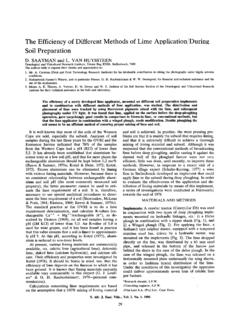
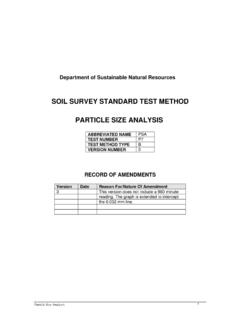
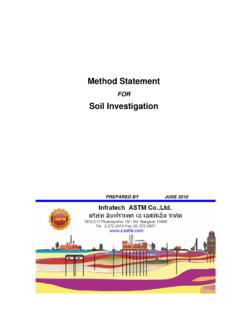
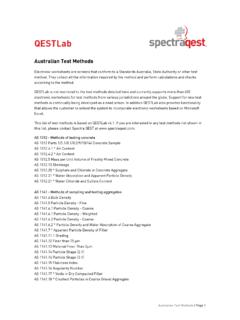
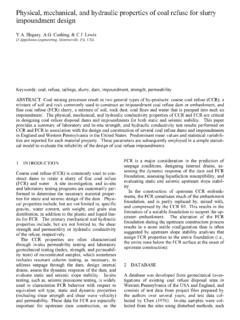
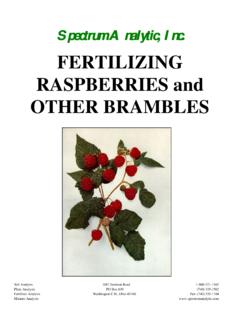
![CFED Phase IV Final Report V[10]](/cache/preview/a/4/7/c/4/e/0/f/thumb-a47c4e0fdbaba3f9a2b52c184a425d9f.jpg)